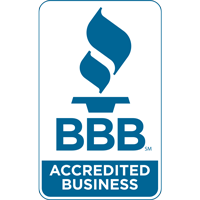
Ceiling fans are one of the most underrated ways to enhance comfort and lower energy costs. By enhancing air circulation and working in conjunction with your HVAC system, ceiling fans and energy efficiency are truly a perfect combination. They offer a smart, eco-friendly way to keep cool while reducing strain on your AC—even preventing unnecessary air conditioning repair.
In this blog, the experts at Brookwood Inc explain how ceiling fans can keep you cool while increasing your HVAC efficiency. We'll also provide some HVAC efficiency tips that make the most of ceiling fans.
Comfort vs. Temperature: The Effect of the Wind-Chill Effect Indoors
Ceiling fans don’t actually cool the air—they make your home more comfortable by blowing air across your skin. This is called the wind-chill effect, and it can make a room feel up to 4 degrees cooler without adjusting the thermostat. That means you feel less hot and enjoy the benefits of indoor air circulation from your ceiling fan while relying less on your air conditioner—helping reduce your electric bill in summer.
The Best of Both: Benefits of Using Fans and Air Conditioning Together
There are several upsides to using ceiling fans and air conditioning at the same time, especially during the warmer months. By using both, you increase HVAC efficiency and enjoy a cooler living space with less effort from your cooling system.
Why you should use ceiling fans and AC together:
- Ceiling fans help lower HVAC load by moving cool air more evenly around a room. Limiting HVAC stress is important, because it can help you avoid a breakdown that may lead to premature AC or furnace installation.
- Using overhead fans boosts the comfort level of your home by getting rid of warm pockets and enhancing circulation.
- Combining ceiling fans and AC can cut energy consumption. If you have a home automation system, you can even modify your smart thermostat settings to increase the temperature slightly while your ceiling fan is running.
Clockwise vs. Counterclockwise Ceiling Fan Rotation: What Direction to Spin in Summer and Winter?
To make full use of your ceiling fans year-round, it’s important to set the blades to rotate in the right direction for the season. The direction affects how air circulates, which can either cool you down or gently recirculate warm air so you feel warmer.
When it's best to spin ceiling fans counterclockwise
On hot days, ceiling fans should rotate counterclockwise at a higher speed. This creates a breeze that moves air toward the floor, enhancing the wind-chill effect and making you feel cooler.
When to rotate ceiling fans clockwise
When it's cold out, set your fan to spin clockwise on a slower speed. This softly moves cold air up and circulates heated air down to where you can feel it, helping you feel warmer without changing your thermostat.
Things to Look for in a Ceiling Fan
Picking the best ceiling fan depends on a few key factors, including blade design, airflow rating and room dimensions. First, look for fans that have a good combination of ECFM airflow and blade pitch to provide efficient air movement in your space:
- ECFM is how much air a fan pushes—the cubic feet per minute, or CFM—per watt of electricity consumed. Fans with greater ECFM are the most energy efficient.
- Blade pitch refers to the angle of the blades. A sharper blade pitch moves more air than a shallower pitch but can also stress the fan’s motor.
Also, consider room size when sizing a ceiling fan—a fan that’s too small won’t move as much air as you'd like, while one that’s too large may be too strong for the space.
Boost Your HVAC Efficiency With Help from Brookwood Inc
At Brookwood Inc, our HVAC experts can help you maintain a cozy home while easing the burden on your heating and cooling systems. From efficient ceiling fan strategies and air conditioning installation to smart thermostats and furnace repair, we offer comprehensive solutions that work with your budget. Schedule your appointment by calling 641-693-6216 today.


